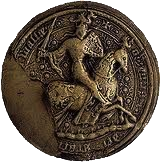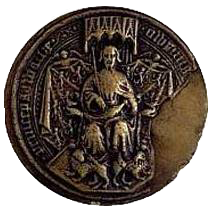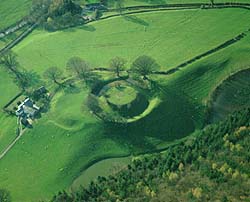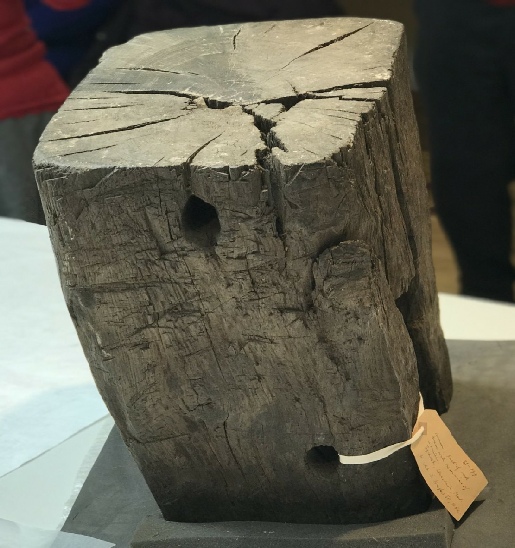Sycharth
Little is known of the history of Sycharth until the late 14th Century when Owain Glyn Dŵr inherited the lordship of Cynllaith from his father, Gruffudd Fychan. It was built on a fine motte and bailey earthwork in the Cynllaith valley to the west of Offa’s Dyke, and it would have been the main home and court of Owain and his family until its destruction in 1403 by prince Henry, the future Henry V of England.
 In Owain’s time, Sycharth was a very impressive estate which was the envy of his contemporaries. The best description we have of the moated manor house is in the poem composed by Iolo Goch at the end of the 14th Century. Iolo was a gifted itinerant poet and the poem recorded one of his visits to Sycharth. It is a paeon of praise for the welcome and hospitality that Glyndŵr offered to his guests there.
In Owain’s time, Sycharth was a very impressive estate which was the envy of his contemporaries. The best description we have of the moated manor house is in the poem composed by Iolo Goch at the end of the 14th Century. Iolo was a gifted itinerant poet and the poem recorded one of his visits to Sycharth. It is a paeon of praise for the welcome and hospitality that Glyndŵr offered to his guests there.
Iolo Goc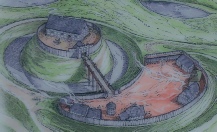 h describes a splendid manorial hall approached over a moat bridge and through a gate. The building had a tiled roof, a free-drawing chimney and nine wardrobes containing clothes comparable with the finest found in the shops of London’s Cheapside. He likens its outbuildings to the bell-tower of Dublin Cathedral and the cloisters of Westminster Abbey, and Sycharth obviously had the resources required to sustain a large household, including an orchard, stone dovecote, rabbit warren, fishpond, heronry, mill and deer park.
h describes a splendid manorial hall approached over a moat bridge and through a gate. The building had a tiled roof, a free-drawing chimney and nine wardrobes containing clothes comparable with the finest found in the shops of London’s Cheapside. He likens its outbuildings to the bell-tower of Dublin Cathedral and the cloisters of Westminster Abbey, and Sycharth obviously had the resources required to sustain a large household, including an orchard, stone dovecote, rabbit warren, fishpond, heronry, mill and deer park.
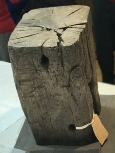 When the moat was drained in the late 19th Century, a beam was discovered, the end of which was cut off and is now stored at the National Museum of Wales. It is hoped that modern dating techniques will be used to show that the wood was felled before 1400, so that the timber could then be put on display for future generations to see.
When the moat was drained in the late 19th Century, a beam was discovered, the end of which was cut off and is now stored at the National Museum of Wales. It is hoped that modern dating techniques will be used to show that the wood was felled before 1400, so that the timber could then be put on display for future generations to see.
Sycharth was Owain’s main family home until 1403. He lived there with his wife, Margaret, and their many children. Iolo Goch praised both Owain and Margaret for their welcome and hospitality: visitors were provided with the finest of foods, wines and Shrewsbury’s best beer, and as Iolo said, ‘… there is no hunger or thirst at Sycharth.’
We have a rare indication of Owain and Margaret’s appearance: Owain is described as ‘gŵr meingryf’ (a lean, strong man) and ‘the best of Welshmen’; and Margaret as ‘the best of all women … dignified and noble by nature’. Similarly, their children are described as ‘…a fine nestful of chieftains.’
Excavations were undertaken at the site in 1962-3 and in 2003 which revealed the remains of two timber halls on the top of the mound. One of these buildings was substantial and about 13m (43ft) in length, but none of the buildings survived the predations of warriors and robbers. In 2009, further non-intrusive surveys were done which apparently showed the position of the original keep, as well as a number of buildings and structures within the bailey area. An outer enclosure was also identified by this survey to the northern side of the mound.
An interpretation of what Sycharth may have looked like in Glyn Dŵr’s day can be seen in videos by
* The Society has asked Powys County Council to improve the signage to the site, but click here for directions to Sycharth.


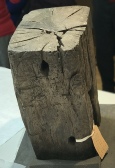
Rollover Images To Enlarge






